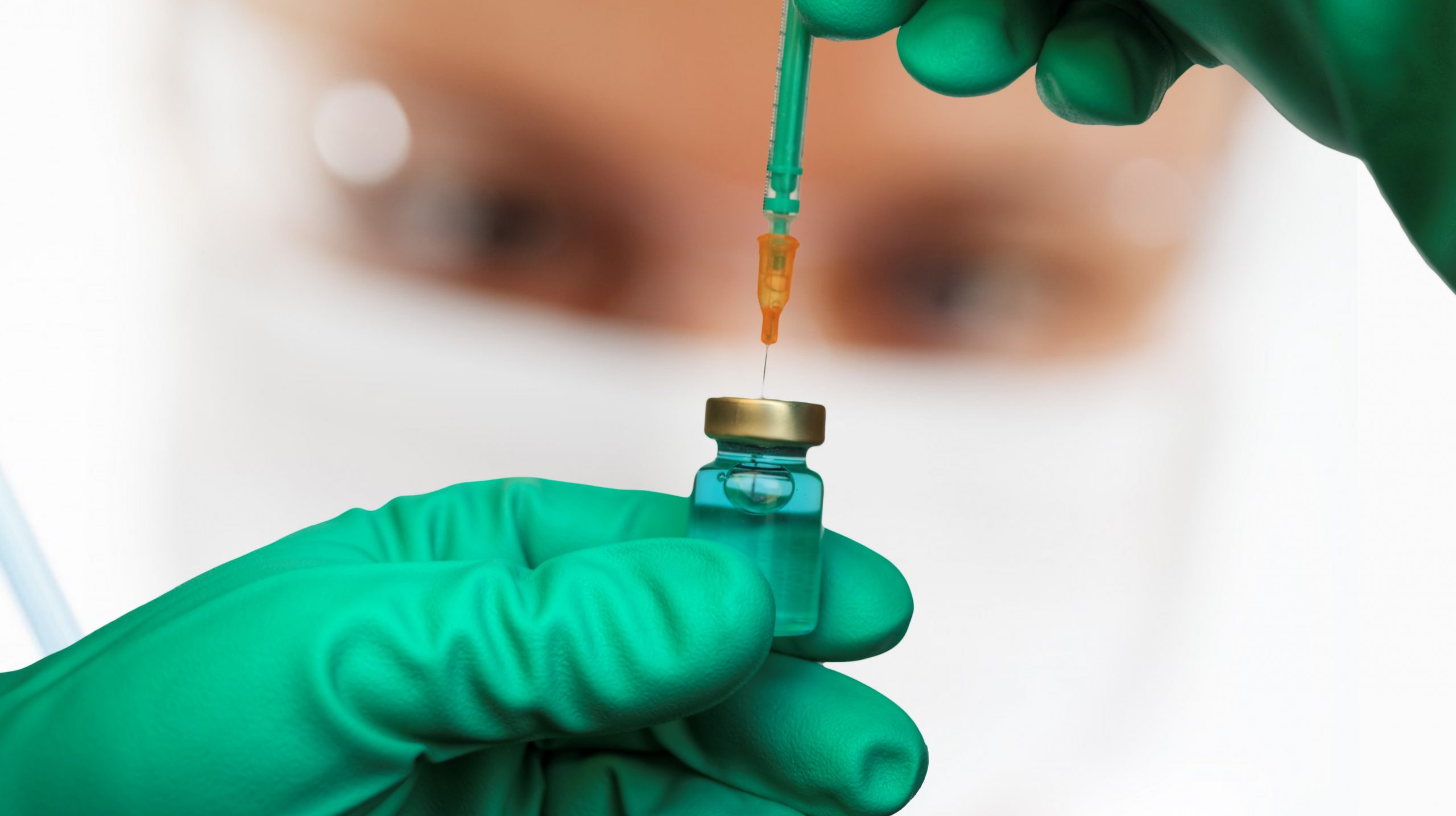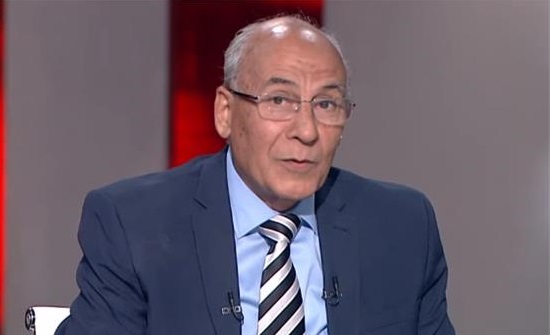On the heels of the Food and Drug Administration’s (FDA) belated approval of the Pfizer vaccine, President Joe Biden on Sept. 10, introduced a sweeping emergency executive order requiring companies with 100 or more employees to ensure that their workforces are fully vaccinated or produce negative COVID-19 tests at least once a week.
The new requirements are a step to “combat those blocking public health,” Biden said during the announcement, noting that about 80 million Americans had not yet received their first dose. “We have tools to combat the virus … if we can come together as a country to use those tools,” Biden said.
The mandate, which is set for a fiery and lengthy debate in Congress amid staunch Republican-led opposition, comes as the United States grapples with a rising number of infections that has “threatened children’s return to school, slashed consumer confidence, rocked the job market, derailed travel plans, delayed employees’ return to offices, and led more and more companies to downgrade growth forecasts,” wrote Lucy Bayly for the NBC News website.
Proponents of Biden’s most proactive anti-pandemic measure to date say it is all but necessary and part of a “multifaceted approach,” according to Bayly, and that without resolute top-down decisions, another wave of infections and hospitalizations would be too much for the already beleaguered economy.
The mandate has not fallen on deaf ears in corporate America, which has overwhelmingly supported Biden’s initiative. “We know vaccines, coupled with widespread and convenient testing, serve as powerful tools to help slow the spread of COVID-19 in our communities, keeping the U.S. economy open and protecting America’s workforce,” Brian Huseman, Amazon’s vice president of public policy, said in a September statement.
Exactly how the corporate vaccine mandate is received by large multinationals and crucially, SMEs and the millions of employees across the country affected by the measure will likely become a critical component of Biden’s legacy.
Big business backing
Perhaps one of Biden’s greatest allies in his quest to achieve a sufficient nationwide vaccination rate is resounding support from many of the titans of American industry, including brands like United Airlines, Disney, Tyson Foods and Fox News, all of which Biden praised for having implemented mandates before his announcement.
However, the administration still faces pushback amid a “critical shortage of workers [as] many CEOs who are in favor of vaccinations have said they have been holding back on mandates out of fear that workers would quit for competitors that do not require employees be inoculated,” said the NBC report.
Proponents say “Biden’s mandate simplifies that equation,” according to Bayly, pointing to numbers from jobs platform ZipRecruiter showing “a huge increase, just recently, in the share of postings that either mandate or request employees be vaccinated,” Julia Pollak, a labor economist at ZipRecruiter, said last month before the FDA’s full approval of the Pfizer-BioNTech two-dose vaccine.
The general thrust behind the idea of Biden’s corporate mandate is that once enough major employers are on board, it will inevitably set a trend for other employers to follow suit.
The ruling is expected to “affect over 100 million workers and will also levy substantial fines of up to $14,000 per infraction against companies that refuse to comply,” said Andrew Mark Miller of Fox News last month.
Predictably, red-state governors are blasting the measure as “counterproductive and an unprecedented assumption of federal mandate authority,” said Arkansas Gov. Asa Hutchinson, echoing the general chorus of Republican sentiment on the issue, in a report from The Guardian.
But as Biden faces opposition across the aisle in Congress, he faces the larger challenge of achieving what his administration deems a sufficient vaccination target “as hundreds of Americans continue to die each day from the virus,” wrote Richard Luscombe in The Guardian’s report.
The federal Centers for Disease Control and Prevention (CDC) reported Sept. 12 that 178.3 million people in the U.S. were fully vaccinated, accounting for 53.7% of the population, while 209.1 million (63%) had received at least one dose.
Surgeon General Vivek Murthy said the U.S. needs to “move to the next phase” of pandemic response because of the highly contagious Delta variant. Luscombe relayed Murthy’s assertion that “the business roundtable has said this is the right move. The American Medical Association has said this is the right move. It will help more places do what they want to do, to make workplaces safer so that people can feel more secure coming back to work and keep our economy strong.”
Enforcement challenges
Notably, the U.S. agency in charge of enforcing the new rules “faces stiff challenges,” wrote David Shepardson in a September Reuters report.
The Labor Department’s Occupational Safety and Health Administration (OSHA) “is in charge of formulating and enforcing the rule, which will be rolled out in the coming weeks. But the agency is significantly understaffed, and its emergency rulemaking mechanism has a mixed track record,” he continued. This, on top of mounting opposition and legal challenges from Republicans on the state and national levels.
Crucially, with a purview of over 80 million employees, “OSHA won’t be able to police every employer,” A. Scott Hecker, a labor lawyer in Washington, D.C. at Seyfarth Shaw, was reported as saying in the Reuters report.
Moreover, OSHA “plans to publish an Emergency Temporary Standard (ETS) to enact the new requirements,” the White House announced, according to the report from Shepardson. That measure, which is “used to accelerate urgent rules, has only been used 10 times in OSHA’s 50-year history. Courts have invalidated or halted four of those rules and partially blocked one, according to the Congressional Research Service.”
Their most recent ruling in June “took five months to formulate after an executive order by Biden. Unions sued to challenge it, claiming it did not do enough to protect workers outside healthcare,” said the report. OSHA’s last ETS since that one was 38 years prior.
The new vaccination rule would likely be in effect while any legal challenges play out, but OSHA’s low success rate with ETS rules undercuts its ability to set a precedent for would-be refusers. White House Press Secretary Jen Psaki defended the OSHA ruling by maintaining it was “on strong legal footing” citing a 1970 law authorizing ETS.”
The law requires the Department of Labor to take action when it finds “grave risk to workers,” Psaki qualified the pandemic’s current death toll of more than 600,000 people as just that.
Also undermining its efforts are OSHA’s shortage of inspectors and resources. Quite simply, “it is spread too thin,” said Shepardson. OSHA, according to the report, has only 800 safety and compliance inspectors to cover the more than 100,000 private-sector companies affected by the new rule.
Additionally, the agency “has largely failed to hold employers accountable for unsafe conditions during the pandemic, Reuters reported earlier this year, identifying dozens of workplaces where employees complained of slipshod pandemic safety. Regulators never inspected the facilities or, in some cases, took months to do so,” said the report. Two-thirds of employers cited by OSHA for COVID-19 safety violations had not paid fines, and more than half appealed the OSHA citations.
However, Biden and his cohorts are confident OSHA will deliver when it comes to managing a successful enforcement, being aided in tandem by the increasing number of larger corporations taking up the vaccine mandate.
Debbie Berkowitz, chief of staff and senior policy adviser for OSHA during the Obama administration, was buoyant, pointing to the claim that “employers usually follow forthcoming rules after an announcement like the president’s [early September],” according to a report by Alex Gangitano for The Hill that month. “What we always found with OSHA standards is when employers know it’s coming, they start complying. I would say the majority of employers do that,” Berkowitz was reported as saying.
The U.S. Chamber of Commerce and Business Roundtable — two of the biggest lobbying groups for corporate America — said they are not opposed to the Biden administration’s vaccine requirement, and although they have not taken a strong stand against the executive order, they have also not embraced it.
The politics surrounding the mandate, as well as lingering logistical challenges are still expected to put OSHA between a rock and a hard place when it comes to effective enforcement nationwide.
SME fallout
Further favoring supporters of the mandate are the views of labor experts who believe the administration “should be able to withstand any [upcoming] legal challenges ” Gangitano wrote, citing former OSHA deputy assistant secretary in the Obama administration, Jordan Barab, who said; “I think they should be on pretty good legal ground, I think they’ve done a lot of the work already.”
Critically, Barab touched on perhaps one of the most sensitive and challenging aspects of Biden’s mandate — how it will affect SMEs across America. Barab took issue with the 100-employee threshold for Biden’s mandate “arguing it was unprecedented in the history of OSHA to have a small-business exemption.” His view is that this is “unjustified and unfounded scientifically. It’s catering to the small-business community. They wanted to limit some of the small-business fallout of this, but I think it was ill-advised.”
Unlike major multinationals, however, SMEs are predictably much more at risk due to a variety of factors, including being much smaller and more limited when it comes to workforces, capital, recruitment, budgeting and their bottom line.
Refrigerated truckload carrier Lawrence Transportation Co. in Minnesota is a prime example of how the vaccine mandate will affect thousands of SMEs.
Owner Eric Lawrence manages “just under 150 employees and worries about the complexities and expense the vaccine mandate may cost him. His company, which has been operating throughout the pandemic, is now facing uncertainty about how the new regulations will unfold,” wrote Zachary Halaschak for Yahoo News mid-September.
“I’ve had a lot of people ask me what’s going to happen, and I guess at this point, my response then is, ‘Well, let’s just wait and see.’ We’re not working with a lot of information here,” Lawrence told the Washington Examiner.
“One qualm small businesses have had is the seemingly arbitrary number of 100 employees,” Halaschak of Yahoo News said. “What’s the science between 99 and 100?” Lawrence asked. “It doesn’t make any sense.” Biden’s edict “also comes at a time when businesses across the country are facing labor shortages,” relayed Halaschak.
While Lawrence is vaccinated, he said some of his employees, particularly his truck drivers, may not want to get inoculated. “He said his complaint isn’t about the vaccine, but rather it is mandated. There is a sense of confusion about the mandate, he said,” wrote Halaschak. Echoing the concerns of many SME owners, Lawrence said the prospects of the mandate are “scary, because weekly testing for his employees who don’t want to be vaccinated would entail a logistical nightmare.”
Not only will the move be logistically challenging, “one of the most glaring questions for business owners is who is going to pay for weekly testing for employees who refuse to be vaccinated,” said the report. While massive corporations with thousands of employees may be able to absorb the cost should the government require employers to pay, “smaller businesses with just over 100 employees could end up struggling,” said Halaschak.
Deric West, president of Honeoye Falls Marketplace and Mendon Meadows Marketplace, two grocery stores south of Rochester, New York, has about 100 employees at one store and 50 at the other “and expects the government to calculate those as one entity, meaning his stores will fall under the umbrella of the vaccine mandate,” he said to the Washington Examiner last month.
West said that if companies are required to fund COVID-19 tests for employees every week, “the costs could add up and create a “tremendous burden” for employers.” Ultimately, he and many others worry that the cost of the testing could end up being passed down to consumers.
U.S. inflation has ballooned to unexpected levels recently. Consumer prices increased 5.3% for the year ending in July, according to the Department of Labor, and the producer price index has risen to 8.3% from a year ago, a 10-year high.
While several factors, including increased demand, are behind the higher numbers, enforcing the corporate vaccine mandate will undoubtedly have a ripple effect across the wider economy whose relative effects will be ascertained more clearly in the coming months.
“Whatever industry you’re in,” West said, “that cost is going to have to be absorbed.”







